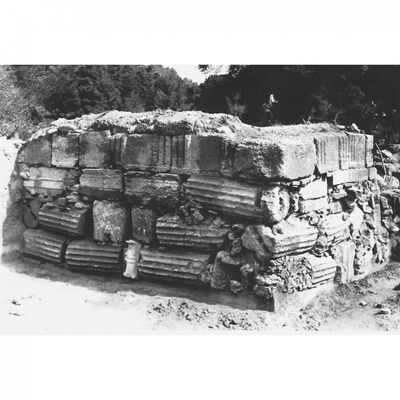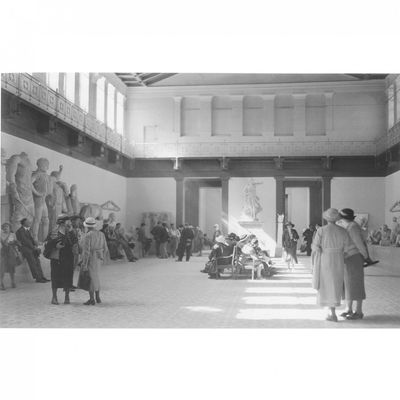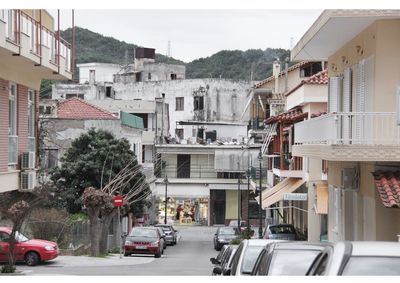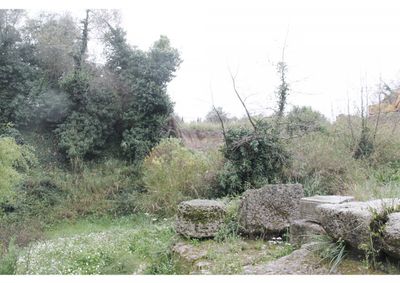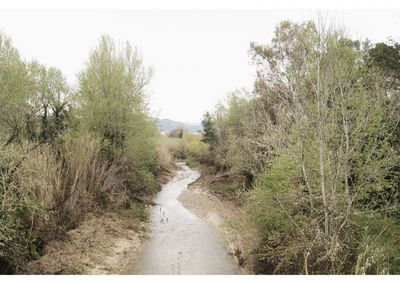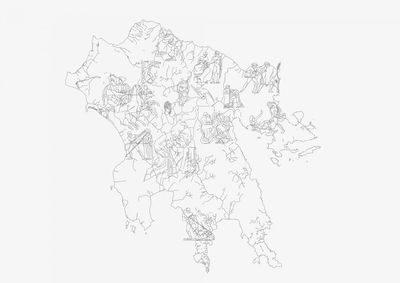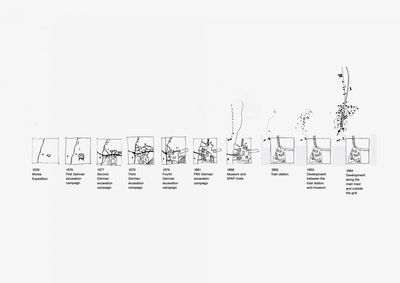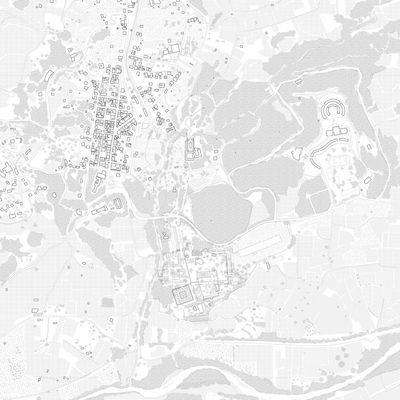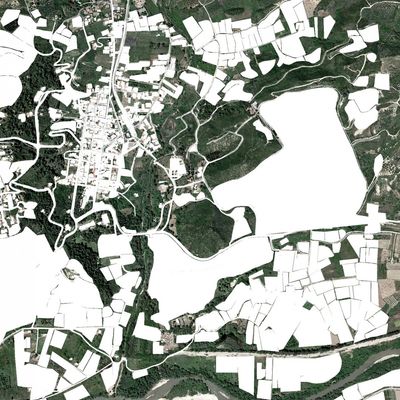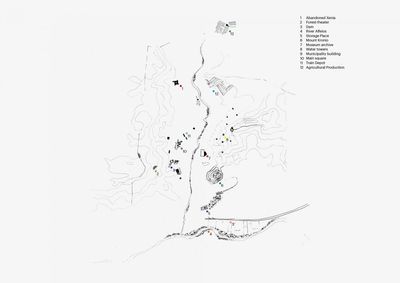OlympiaHeritage as an Urban ProjectJulie Rigling and Dorothee Hahn
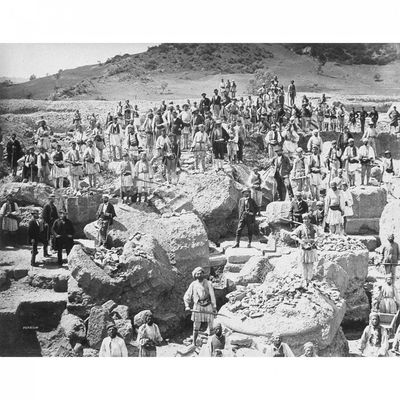
“Countryside as heritage landscape” refers to landscapes often encountered in Peloponnese: remains of antiquity scattered in myriad remote or peripheral locations, outside of cities. The sanctuary of Olympia, placed in a quiet and relatively secluded spot at the confluence of Alfeios and Kladeos Rivers, is typical of this phenomenon.
The site attracted visitors for centuries, even before the first Olympics, which took place in 776 BC. To provide security for athletes and spectators gathering from all over the Greek World, Olympic Truce was announced before and during the games. The architecture of the site developed in several stages over time, resulting in a heterogeneous structure. In 600 BC, one of the first buildings was the Temple of Hera, followed in 560 BC by the extraordinary Olympic Stadium embedded in the terrain. In 456 BC, during the so-called golden age of Olympia, the Temple of Zeus was built with gigantic statue of Zeus, the work of Phidias, in the interior. Due to the growing importance of the games, further buildings for athletes were built, including the Palaestra and the Baths.
In the 3rd century earthquakes and invading tribes damaged the site. The Olympic games continued to be held until 393 AD when Christian emperor Theodosius prohibited the worship of Greek gods. Repeated floods destroyed the settlement again in the early 7th century. An alternative theory, launched recently by German archaeologists based on findings of mollusk and shells at the site of Olympia, proposes that its definitive destruction took place in the early 7th century as a consequence of a massive tsunami.
Though the site was rediscovered in the 18th century, the first excavations in Olympia took place in 1829, carried out by the French Expedition Scientifique de Morea. Subsequently, the excavations and the preservation of the Ancient Olympia have been the responsibility of the German Archaeological Institute in Athens, who received exclusive access. The first major excavation began in 1875, funded by the German government.
In 1936, the year of the Olympic games in Berlin, a new systematic excavation was initiated by the Nazi Party and the ritual of bringing the Olympic flame to the venue of the games had been started. Leni Riefenstahl commemorated the new ritual in the documentary film „Olympia“, purportedly aiming to revive the ideals of the Olympics in the modern, western world.
Today, the Olympia heritage site lies under the jurisdiction of the Greek Ministry of Culture, Education and Religious Affairs, which supervises the area for any acts of illegal excavations, and intervenes in case any new finds are revealed. The financial resources for the site are provided by the Greek state and the EU funds.
The contemporary village of Olympia sprouted as a parasite adjoining the archaeological area soon after the ruins were discovered. To this day, the village life is based on seasonal tourist visits, mainly during the summer. The village main road is lined with restaurants, tourist agencies, hotels, two museums and a municipal building—remarkably, nearly all public buildings in Olympia are of high architectural value. The municipal building, the former Xenia Motel, is designed by Aris Konstatinidis, one of Greece’s leading modern architects. Xenia, after the ancient Greek concept of hospitality, was a nationwide state-run project of tourist infrastructure development during the 1960s and ‘70s—today the Xenia structures in Olympia and throughout Greece are largely abandoned and awaiting privatisation.
The wider municipal territory of Olympia today counts around 13 400 inhabitants; the village itself around 1000. In 1989, the ancient site was awarded the UNESCO World Heritage status. The need to protect the remains from possible floods led to the construction of extensive flood barriers along Alpheios. After forest fires nearly reached Olympia in 2007, fire protection infrastructures received major overhaul.
The nearby Port Katakolon serves several cruise lines in the Mediterranean and functions as jumping off point for cruise tourists’ day trips to Olympia. In 2010 for example, nearly 950 000 passengers debarked at the port, and were shuttled to Olympia and back, during their six-hour stops.
As a consequence of UNESCO regulations, many urban interventions have taken place within and around the site. The implemented buffer zone and other protection arrangements applying to built structure and traffic in the area, prevent any conflicts from the expansion of the tourist village, but they also appear to hamper its development.
